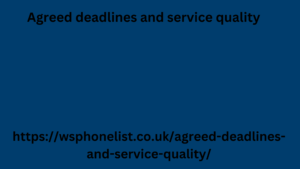Polishing your email communication goes beyond just the content. A well-crafted sign-off plays a crucial role in establishing professionalism, fostering relationships, and leaving a lasting impression on the recipient. This guide delves into the art of crafting the perfect email closing, exploring various options and their effectiveness in different scenarios.
The Power of the Email Sign-Off (Title 1)
Imagine a captivating email, meticulously written, addressing a critical point, only to end abruptly. That’s the power (or lack thereof) of a sign-off. A strong closing not only conveys professionalism but also sets the tone for the next interaction. It can:
Reinforce the Email’s Purpose: Briefly reiterate the key message or desired action.
Express Appreciation: Thank the recipient for their time and consideration.
Encourage Future Engagement: Open the door for further communication.
Maintain Professionalism: Conclude the email with a courteous and appropriate closing.
Choosing the Right Sign-Off (Title 2)
Selecting the ideal sign-off depends on several factors:
Relationship with Recipient: Formal for colleagues, clients, or superiors; informal for friends or family.
Email’s Purpose: Informative, persuasive, or collaborative Agreed deadlines and service quality emails might have different closing styles.
Desired Tone: Convey respect, warmth, urgency, or openness.
Here’s a breakdown of common email sign-offs categorized by their purpose:
Formal Closings (for professional relationships, important requests):
Sincerely Best regards Thank you
followed by your name Respectfully yours, Informal Closings (for friendly colleagues, follow-ups): Thanks, Best, Talk soon, Cheers, (use cautiously in professional settings) Action-Oriented Closings (encourage a response, request follow-up): Looking forward to your reply. Please let me know your thoughts. Do not hesitate to contact me if you have any questions. I look forward to hearing from you soon. Open-Ended Closings (invite further communication): Feel free to reach out if you need anything. Let’s chat soon. I’m always happy to help. Additional Tips for a Strong Sign-Off (Title 3): Keep it Concise: Avoid overly lengthy closings that detract from the message.
Maintain Consistency: Use a consistent sign-off style for improved brand recognition.
Proofread and Capitalize: Ensure proper spelling, punctuation, and capitalization.
Personalize When Appropriate: A touch of personalization can enhance your message, especially in follow-up emails.
Avoid Informal Language in Formal Settings: Slang, emojis, or excessive abbreviations appear unprofessional.
Consider Cultural Differences: Research appropriate closing styles when emailing internationally.
Beyond the Basics: Creative Sign-Off Options
Quotes: A relevant quote can leave a lasting impression. (Example: “The best way to predict the future is to create it.” – Abraham Lincoln)
Call to Action: Emphasize the desired action with a clear call to action in the closing. (Example: “Let’s schedule a meeting next week to discuss this further.”)
Company Slogan: Reinforce brand identity with a company slogan in the signature line.
Crafting Your Signature Line (Bonus Section)
The signature block below the closing adds valuable information. Here’s how to craft it effectively:
Include Your Full Name and Title: This adds professionalism and context.
Add Contact Information
Include your email address, phone number, and website (if relevant).
Company Logo (Optional): For business US numr online for free, it’s crucial to emails, a company logo can enhance brand recognition.
Social Media Links (Optional): Consider including links to relevant social media profiles.
By following these guidelines and considering your specific needs, you can craft email sign-offs that leave a lasting positive impression, strengthen professional relationships, and ensure your messages are received with the desired outcome.
Remember:
The perfect sign-off is an extension of your communication style. Experiment, iterate, and find what best reflects your professionalism and personality while maintaining the context and purpose of your email.
